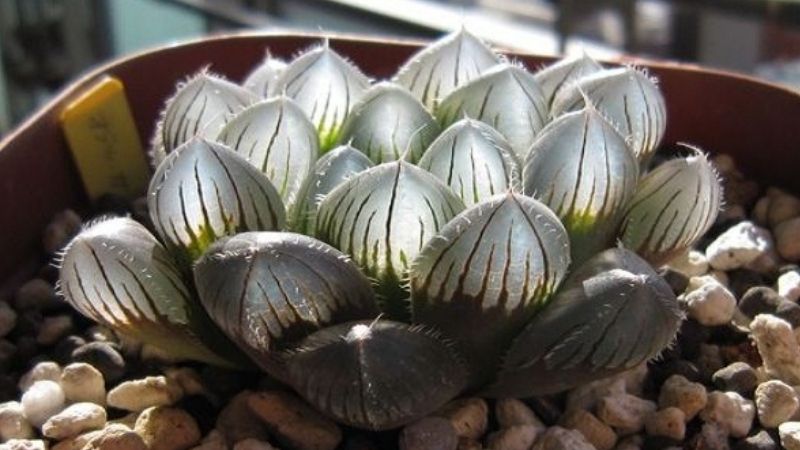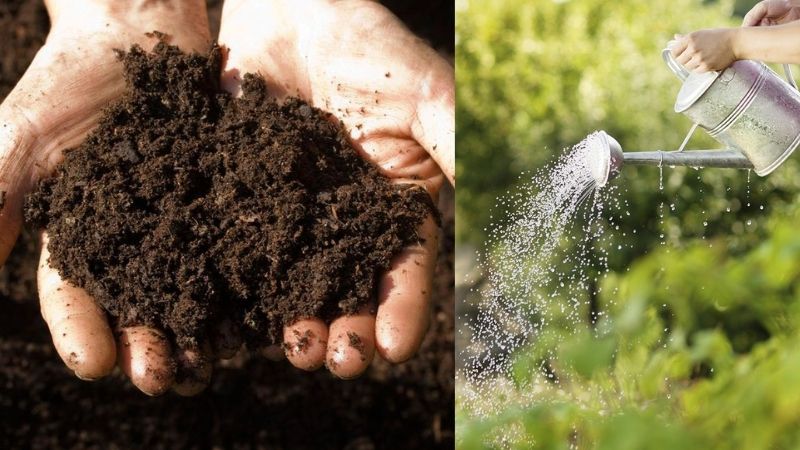One of the most beloved succulents today is the Haworthia cooperi, more commonly known as the diamond succulent. This plant captivates with its unique beauty, resembling a lotus flower, coupled with a dazzling, diamond-like brilliance that draws admirers near and far.
Join us as we delve into everything there is to know about this enchanting diamond succulent that has captured the hearts of many!
1 What is a Diamond Succulent?
 What is a Diamond Succulent?
What is a Diamond Succulent?
Native to South Africa, the diamond succulent (Haworthia cooperi) is a plant that lacks a noticeable stem and belongs to the Asparagus family. Its roots typically come in two varieties: taproots and fibrous roots.
What sets this succulent apart is its leaves, which are succulent, oval-shaped, and arranged in a rosette pattern, resembling a vibrant lotus flower. Even more fascinating is the fact that when exposed to sunlight, the leaves emit a translucent, sparkling light, akin to a dazzling diamond.
The diamond succulent boasts a range of colors, including red, yellow, and purple, and its natural beauty has earned it the title of the “queen of succulents.” Additionally, its robust nature makes it easy to cultivate, and it possesses the ability to regenerate from seemingly dead leaves.
2 The Significance of the Diamond Succulent
The diamond succulent is not just aesthetically pleasing; it also carries a wealth of symbolic meanings:
Symbol of Resilience and Enduring Strength
 The Diamond Succulent Represents Resilience and Strength
The Diamond Succulent Represents Resilience and Strength
Much like other succulents, the diamond succulent embodies a strong will to survive.
With its rapid propagation rate, this plant showcases its resilience. Furthermore, when one leaf withers and falls, it gives rise to multiple new plants, a testament to its enduring strength.
The diamond succulent serves as a reminder that even when one door closes, another will open. So, stay resilient and optimistic on your journey!
Symbol of Eternal Love
 The Diamond Succulent Symbolizes Eternal Love
The Diamond Succulent Symbolizes Eternal Love
Much like a sturdy diamond, the diamond succulent represents enduring and unwavering love.
Despite facing challenges and adversity, this plant continues to grow quietly, much like a steadfast love that remains unchanged through life’s trials. No matter the difficulties, this love endures and overcomes all obstacles.
Feng Shui Plant, Attracting Wealth and Prosperity
 The Diamond Succulent is a Feng Shui Plant
The Diamond Succulent is a Feng Shui Plant
According to Feng Shui principles, the diamond succulent is believed to bring peace, good fortune, and wealth to its owner. It serves as a powerful attractor of prosperity and abundance.
3 Propagating the Diamond Succulent from Leaves
 Propagating the Diamond Succulent from Leaves
Propagating the Diamond Succulent from Leaves
One of the most common methods of propagating the diamond succulent is through leaf propagation. Here’s a simple step-by-step guide:
Materials Needed
- Succulent Leaves: Choose healthy, mature leaves from the base of the plant. Gently twist the leaves counterclockwise to detach them from the mother plant.
- Leaf Preparation: Air-dry the selected leaves in a well-ventilated area for 4 to 5 days until the leaf bases are dry.
- Potting Mix: Prepare a mix of equal parts coarse sand, perlite, and peat moss, with a small amount of compost.
Propagation Steps
 Moisten the Potting Mix
Moisten the Potting Mix
 Place the Leaves on the Potting Mix
Place the Leaves on the Potting Mix
 Place the Container in a Bright, Indirect Light Location
Place the Container in a Bright, Indirect Light Location
 Plant the New Diamond Succulents Individually
Plant the New Diamond Succulents Individually
Tip
When separating the new plantlets, use a sterile knife or scissors to ensure clean cuts and promote healthy growth.
4 Caring for Your Diamond Succulent
 Caring for Your Diamond Succulent
Caring for Your Diamond Succulent
Here are some essential care tips to keep in mind if you plan on growing and nurturing the diamond succulent:
- Provide bright, indirect light to ensure the plant’s healthy growth.
- Avoid placing the plant in direct sunlight or in damp, waterlogged areas.
- Repot the plant every six months to prevent the spread of fungal infections and diseases.
- Maintain a humidity level between 40% and 70% to keep the plant healthy without promoting rot.
- Use fertilizers such as NPK or Thai purple medicine to nourish the plant and prevent pest infestations.
We hope this guide has provided you with valuable insights into the beloved diamond succulent. Thank you for joining us, and happy gardening!
2023 Lunar New Year Gift Ideas for Older Family and Friends
As 2021 approaches, families worldwide are gathering to celebrate the special bond between grandparents and their grandchildren. To show their love and admiration, these thoughtfully chosen gifts will bring a smile to the face of the elderly. Here, we have compiled a list of the 13 most meaningful Tet presents that can bring joy to our beloved grandparents.



































